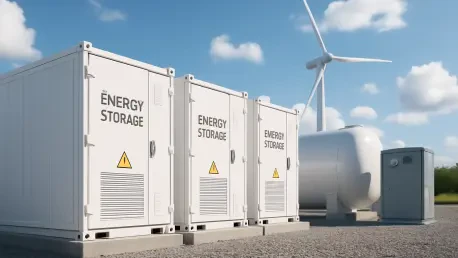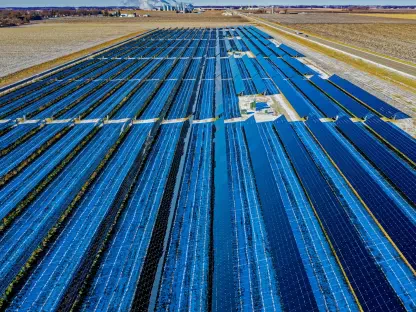Energy storage technologies have become critical in the ongoing transformation of the energy sector, playing a vital role in the decarbonization of the electrical grid. With renewable energy sources like solar and wind becoming major contributors to the energy mix, storage solutions are essential for maintaining grid reliability and stability. This review delves into the evolution, key features, performance metrics, and significant impact of energy storage technologies on various applications.
The Evolution and Context of Energy Storage Technologies
Energy storage technologies have emerged as a pivotal element in the modern energy sector. These technologies function by storing excess energy produced during low-demand periods and releasing it when demand spikes, thus maintaining a balance between supply and demand. Originally developed as a response to the fluctuating nature of renewable energy sources, energy storage solutions have now become indispensable in enhancing grid reliability and efficiency.
In the broader energy landscape, energy storage technologies address several challenges such as energy supply volatility, the aging infrastructure of electricity grids, and integration of renewable energy sources. They underpin the momentum of the renewable energy sector, ensuring that renewable energy can be harnessed efficiently. Despite fluctuations in policy environments, energy storage solutions provide a sustained foundation for energy resilience.
Key Components and Features of Energy Storage Technologies
Storage Mechanisms and Technologies
At the core of energy storage technologies are the mechanisms that enable energy retention and discharge. Various types of storage technologies, such as mechanical, thermal, and electrochemical storage, fulfill specific roles in the energy ecosystem. Each mechanism operates under unique principles; for example, electrochemical storage, widely recognized as batteries, utilizes chemical reactions to store and release energy effectively.
These technologies substantially improve system performance by providing rapid-response capabilities and the ability to absorb and dispatch energy as needed. Their significance lies in their ability to offer adaptable solutions to balance irregular energy supply, meet peak demand periods, and enhance overall grid reliability through ancillary services.
Battery Innovations and Advancements
Recent developments in battery technologies have transformed the energy storage landscape. Innovations such as lithium-ion and lithium ferrophosphate batteries have provided robust alternatives to traditional energy sources due to their high energy density and stability. Advances in battery technology focus on increasing efficiency, lifespan, and reducing costs, making energy storage not only technically viable but also economically feasible.
New battery types, like iron-air and flow batteries, are on the horizon, promising utility-scale applications. These emerging technologies are set to further expand the reach of energy storage by offering scalable solutions that enhance market competitiveness and accelerate the transition toward sustainable energy practices.
Recent Developments and Industry Trends
The field of energy storage continues to witness groundbreaking advancements and trends shaping its trajectory. Innovations are driving increases in energy storage capacity and reducing overall costs. The market demand for flexible and resilient energy solutions has also prompted developments in technologies with extended life cycles and improved safety features.
There is a noticeable shift in consumer and industry behavior towards embracing energy storage as an essential component of renewable energy systems. This shift is not only influenced by regulatory incentives but also by the intrinsic value storage solutions provide in optimizing energy consumption, supporting corporate sustainability goals, and addressing energy security concerns.
Applications and Use Cases in Various Sectors
Energy storage technologies find applications across a wide range of industries and sectors. They play a crucial role in enhancing operational efficiency for utilities, supporting integration of renewable energy in residential and commercial buildings, and improving the performance of electric vehicles. In the industrial sector, energy storage aids in minimizing downtime and reducing operational costs through temporary power solutions.
Notable implementations include a 200 MW/800 MWh project in Southern California, where collaboration among stakeholders focused on the grid’s needs rather than being solely driven by financial incentives. Such instances underline the practical benefits and versatility of energy storage in diverse operational contexts, reinforcing its value beyond traditional uses.
Overcoming Challenges and Addressing Limitations
While energy storage technologies offer multiple benefits, they also face significant challenges. Technical hurdles, such as maintaining battery efficiency and longevity, need to be addressed. Regulatory issues and market dynamics can also impede widespread adoption and integration of energy storage solutions.
Efforts are ongoing to mitigate these limitations through research and development initiatives aimed at improving technology performance, reducing costs, and refining regulatory frameworks. Collaborations between industry, government, and academic institutions are driving innovation, fostering an environment conducive to overcoming these barriers.
Prospects and Potential Future Developments
Looking ahead, energy storage technologies are poised for continued growth and innovation. Promising new technologies, such as iron-air and flow batteries, offer potential breakthroughs in storage capacity and environmental sustainability. These advancements are anticipated to enhance the viability of renewable energy systems and provide greater flexibility in energy management.
In addition to technological advancements, strategic policies and investment in research and development remain crucial. The growth trajectory of energy storage will likely be shaped by ongoing collaboration among stakeholders, fostering an ecosystem where energy storage serves as a cornerstone of modern energy solutions.
Summarizing the Review and Closing Thoughts
This comprehensive review has underscored the critical role energy storage technologies play in the current and future energy landscape. The technology’s ability to enhance grid reliability, support renewable integration, and offer economic and ecological benefits signifies its importance across various sectors. With continued innovation and strategic investments, energy storage technologies will likely continue to evolve, providing dynamic solutions to complex energy challenges. As we move forward, the focus on advancing storage technologies will remain pivotal in paving the way toward a resilient and sustainable energy future.









